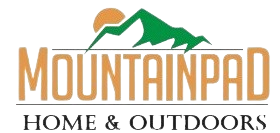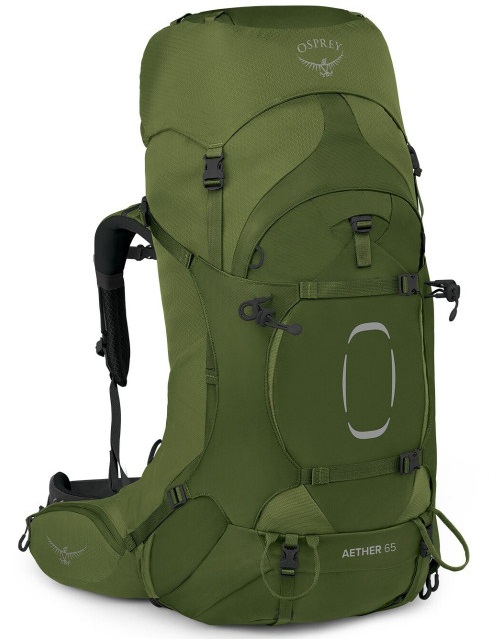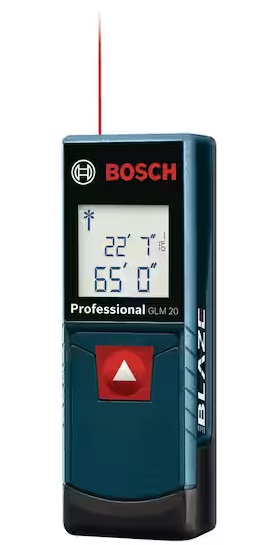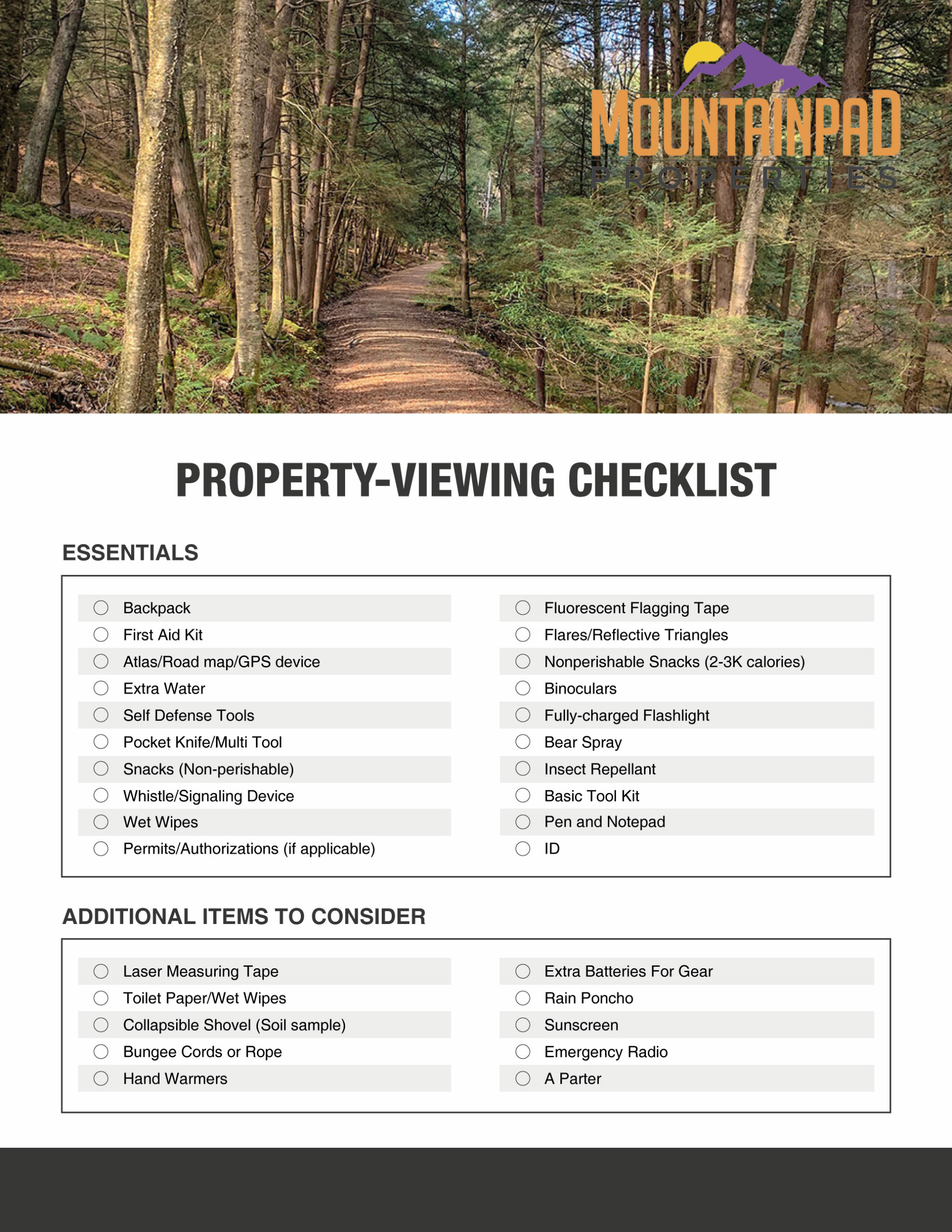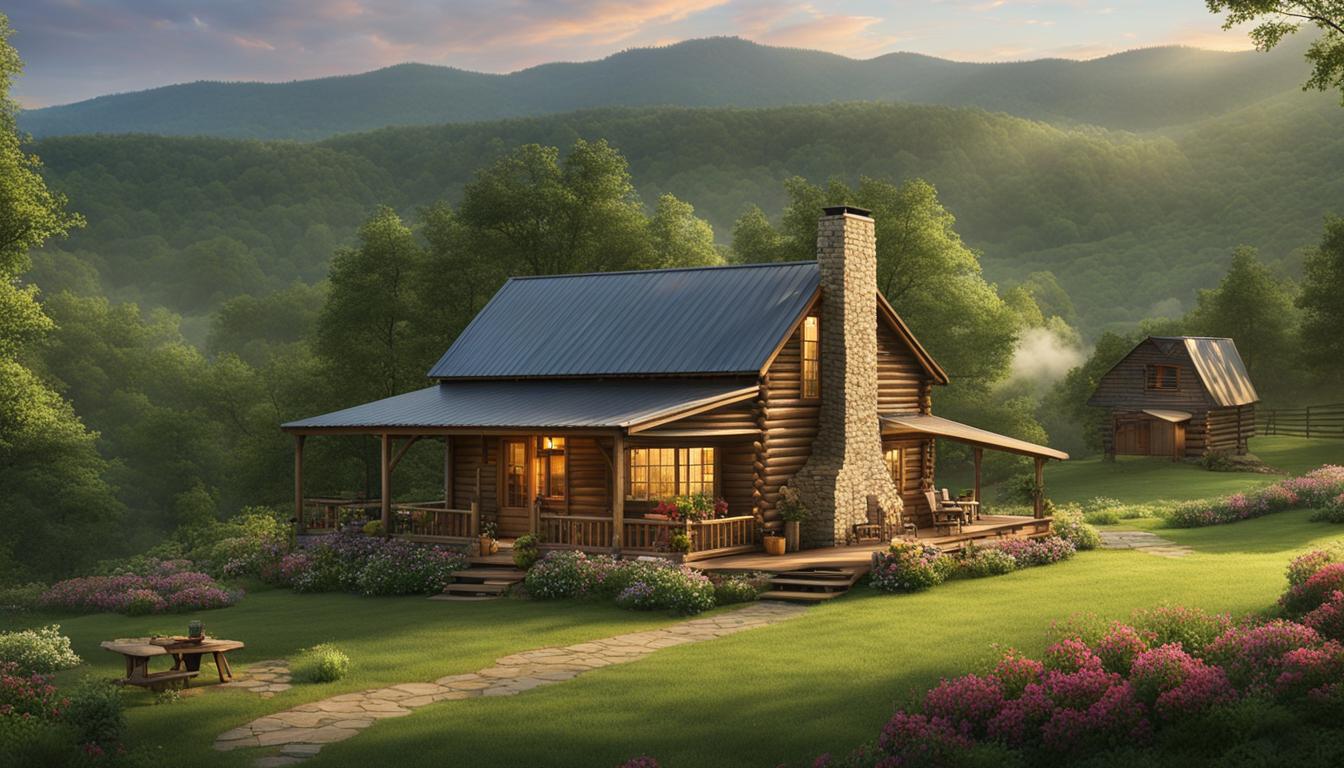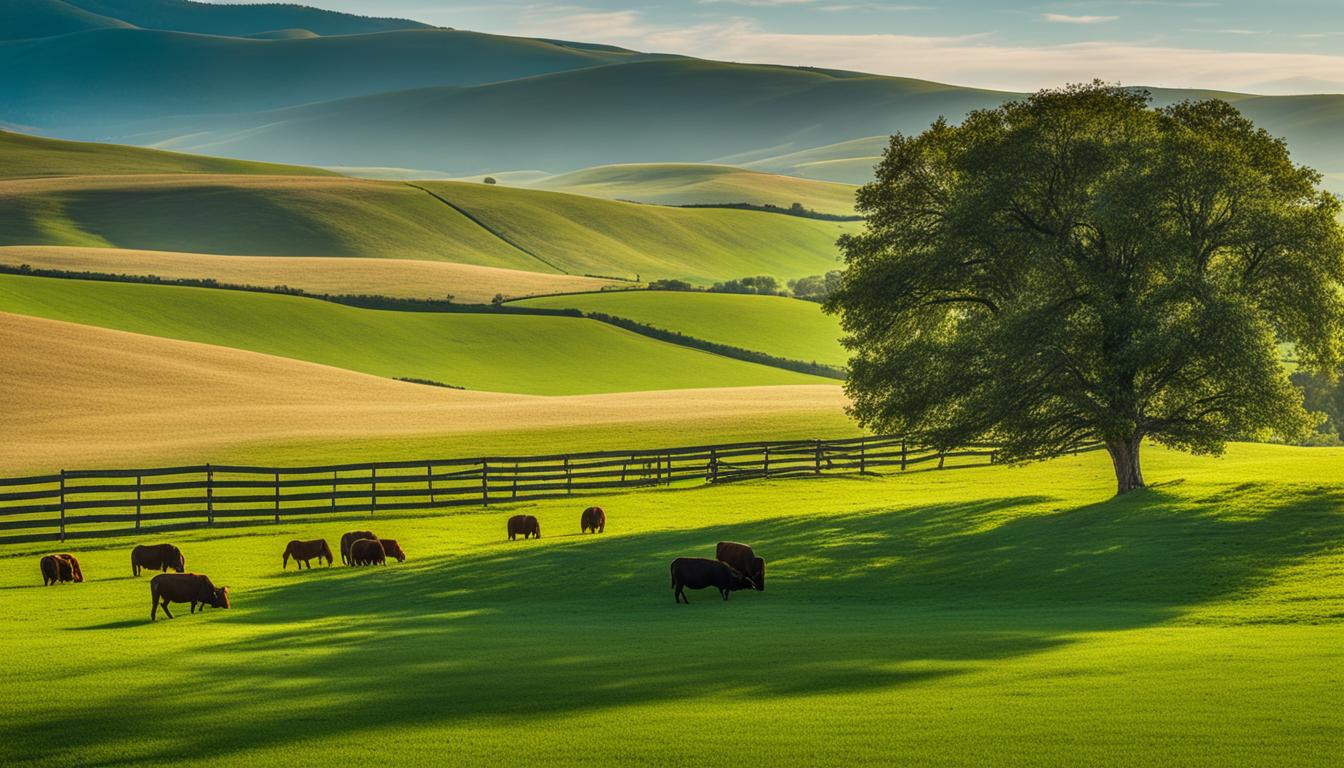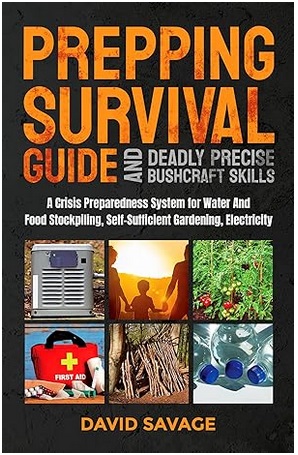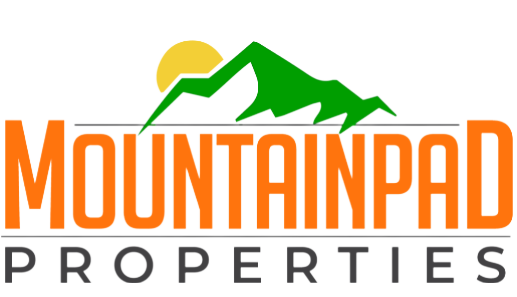Brad T.
November 10, 2023
21 Things to Bring When Viewing a Vacant Land Property
Every time we’ve gone to check out a prospective piece of land we are interested in purchasing, there’s always something that seems to have been forgotten, and our trip to North Carolina just last week was no exception. Whether it’s wading boots, mapping items, or even something basic like sunscreen, there’s always something that seems to have slipped the mind. Since our visits are typically of the long distance variety (usually a six-eight hour road trip), we’ve slapped together a checklist so that next time we can be as prepared as possible.
You can download our FREE Land-Viewing Essentials Checklist at the bottom of this page to make sure nothing is forgotten next time you take a viewing trip. Note: We’ve generated this list based off our prior experiences. While everyone’s list may vary, we encourage you to use our list as a baseline, and modify it to suit your own land-viewing needs.
So, assuming you’ve already discovered the Benefits of Living in Rural Areas and you’re ready to go check out a property, first thing you’ll need is to ensure you’re road-ready, with a road trip safety kit that can be found HERE. If you feel your vehicle is ready to go, read below for an extensive run-down of essential items to bring when viewing a vacant land property:
1. Backpack:
Putting this number 1 on the list, as we obviously need a good pack to carry all the gear mentioned in this list. Our go-to backpack is the Osprey Aether 65. I’ve owned this particular backpack since 2019 and it’s served me well on several hiking trips and camping adventures.
Not only is this backpack built-to-last, but it’s also lightweight and comfortable. These qualities make it an excellent choice for any adventure. Click on the image or click HERE to check it out on Amazon.
2. Emergency and First-Aid Kit
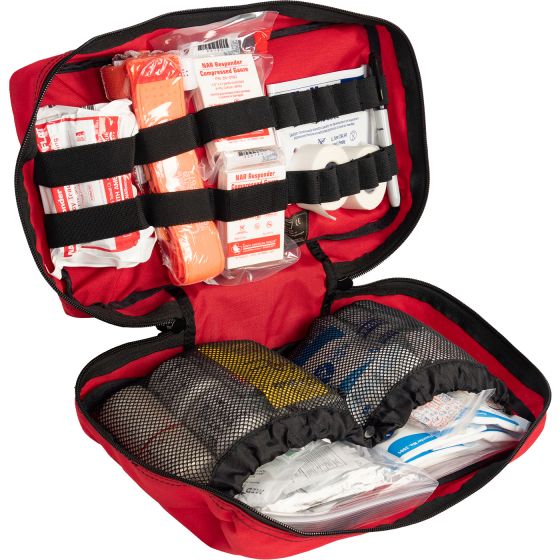
Safety (and nutrients) should always be priority #1. If you plan on walking a piece of acreage for the first time, an emergency first-aid kit, along with water and snacks should be on your person at all times. While we could probably make an extensive list just off this kit alone, let’s just highlight some of the essentials:
- Bandages/wraps: Be able to secure and treat minor cuts and scrapes.
- Tape w/scissors: Have the ability to secure wraps and dressings, if needed.
- Ice Pack: If a minor injury occurs, ice packs can come in handy for instant pain relief.
- Light stick/flashlight: Last thing anyone would ever want is to get lost in the woods after the sun goes down. Make sure you have a good flashlight that is fully charged prior to venturing out.
-
Hydration: Prior to walking a property, we like to fuel-up by chugging a good 12 ounces of water prior doing anything. Then, once you’re ready to hit the ground, ensure you have at least 24 ounces of water per-person. The more the merrier – especially if you plan on venturing too far from your vehicle.
- Survival Snacks: Nuts, fruits and maybe a granola bar or two is essential. Our general rule of thumb is to bring enough calories with you to fuel you up for al least one full day.
3. Mapping/GPS Device
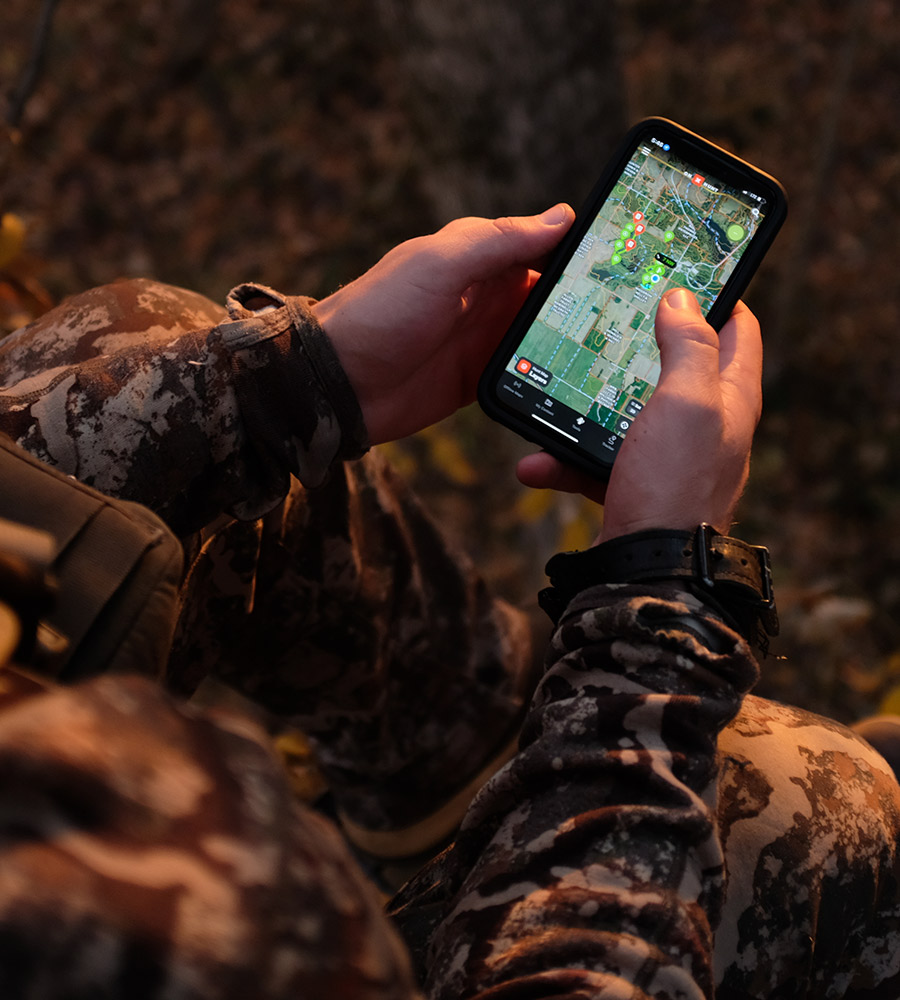
Know your property boundaries using ONXHunt
The two apps we’ve found to be most helpful when scouting properties are ONXHunt and Landglide. Both options offer either a free version or an upgraded subscription plan with extra features. Both will allow you to walk a property while allowing you to identify your exact location in relation to parcel boundaries. Simply open the app to track exactly where you are in relation to any property line. It should be noted that free versions will go offline if you’re not in a service area. So, if your property is remote, you’ll be better off subscribing to a plan or consider a GPS device that has pre-programmed mapping info.
Having GPS mapping capabilities in the palm of your hand is essential for safety. It eliminates the risk of meandering onto someone else’s land, and will also allow you to get an optimal look and feel for how your prospective property is laid out.
Additional mapping considerations:
- Compass: You can find a good compass for less than 10 bucks at any outdoor shop – we recommend throwing one in your backpack prior to walking your property.
- Old School Paper Map: A physical map is a critical travel item, especially if you’re venturing into the mountains or areas where cell service may be limited. The last thing anyone would want is to find yourself in unfamiliar territory with no cell service and no navigation – throwing an old school map in your glove box could prove to be a life-saver.
- Side note: Next time you take a road trip, practice using only a map. You’d be surprised how many people have no idea how to even look at one. Learning how to read a simple road map is definitely a skill worth developing.
4. Fluorescent Flagging Tape
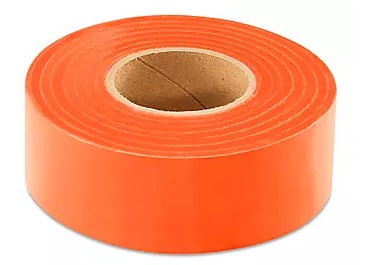
This will allow you to identify corners, parcel lines and even identify trees or areas.
Designed to mark trails, boundaries, hazards, and other important locations in outdoor settings, we did this while walking one of our properties in North Carolina:
Knowing that we wouldn’t be back anytime soon, we wanted to identify all the trees that we knew we’d want to remove to maximize our mountain views. We did this with flagging tape, snapped pics of it, and then sent them to the local excavators so they knew exactly what to do when they arrived. This helped eliminate any confusion, and allowed us to remotely coordinate with the excavators exactly what we envisioned.
– Note: flagging trees or making any other markings on a piece of land is not advisable without the owner’s explicit consent (in our case, we’d already entered into contract and had full authorization to do as we please).
Another reason flagging tape can also come in handy is basic safety reasons. It can help you identify paths and backtrack if you have to – which is super helpful especially if you are looking at a large tract with wooded areas. Tape can also be used to help emergency personnel just in case an undesirable situation were to ever occur in regards to getting lost.
5. Laser Measuring Tape
Measuring distances from corner-to-corner or side-to-side can be tricky, and the best and most efficient way to do this (in our opinion) is with a laser tape. Typically used for construction purposes, this instrument is optional, but could come in handy if you are trying to get basic measurements of a property and don’t have a survey handy. Simply point the laser at an object, and the reading will tell you exactly how far away it is. Pretty handy tool to have on hand!
We’ve had success with this Bosch Professional GLM 20 – simply point it at a tree or other hard surface and check your reading, which projects out to 65 ft. We’ve used these laser measurements to get accurate readings on creek widths, and have found the readings to be super accurate!
Note: If you’re trying to identify larger distances, simply measuring them in “portions” and then adding up the distances is also an option.
6. Proper Attire
This may seem super obvious, but we’ve all made the mistake of not wearing the proper gear during a trip or outdoor event. Comfortable hiking boots, waterproof gear, wading boots, and cold weather gear are all things to consider. Several other items we could lump into this laundry list (pun intended), but key thing to remember is to pack heavy – check weather beforehand, and dress appropriately. Long sleeves and full-length pants are key, especially when walking through brush and wooded areas.
7-21. (Additional Items to Consider):
- Layered Clothing: As mentioned above in “Proper Attire” – Choose moisture-wicking base layers, insulating mid-layers, and waterproof outer layers. Always dress heavier than needed – knowing you can shed clothes throughout the day, if needed.
- Fully Charged Cell Phone: In case of emergencies, keep your phone charged and consider investing in a solar charger – You can get a small solar charger to charge basic items for less than 100 bucks.
- Extra Shoes: Comfortable hiking boots should already be on your foot, but an extra pair of shoes should be in the car just in case.
- Multi-tool/Camping Knife: Because you never know when a good blade will come in handy.
- Extra Socks and Underwear: Wet socks can make for a miserable experience. Always pack extra socks and undergarments when gearing up for any adventure.
- Headlamp or Flashlight: Don’t forget the extra batteries!
- Rain Gear: Staying dry is key to making the most out of your trip – you can pick up a light rain jacket for only a few bucks, and it’s easy to pack. Wading Boots may also be necessary if you’re in a boggy area or if your property is in a flood zone. Learn if your property is in a wetlands area HERE.
- Rope or Clothesline: Along with flagging tape, rope can be used to highlight hazard areas or identify other areas of concern.
- Whistle and Signaling Devices: Especially important if you are taking long hikes or camping far away from others.
- Weather-Appropriate Accessories: Don’t forget essentials like a hat, gloves, and sunglasses, especially if you’re camping in extreme conditions.
- Insect Repellent: Nothing worse then getting eating alive by a swarm of thirsty, blood-sucking mosquitoes.
- Wet Wipes: If you’re spending a few hours walking around on any property, trust that wet wipes will almost certainly come in handy.
- Binoculars: If you’re scouting a property in a region of rough terrain or unique topography features, binoculars come in handy for scouting long-range views.
- ID: A form of ID is always good to have, preferably one that indicates your blood type (just in case there is some sort of accident or emergency)
- Permits and Authorization: Just in case an over-protective neighbor decides to challenge who you are or why you’re there. We’ve found it beneficial to have documentation from the property owner explicitly stating your authorization to be on the property. Note: We like to make contact with the property owner 5 minutes prior to arrival, just to ensure all parties are on the same page.
- Notepad and Pen: Having a pen and pad in hand to jot down notes and observances are key
- A Partner: We saved one of the most important “items” for last. Not only are there safety in numbers, but the best and most memorable trips are made when you have someone to enjoy the experience with.
- Download our FREE, printable Property-Viewing Checklist by clicking on image below
Recent Blogs
The Joys of Living In Rural Areas: Serene Bliss
Living in rural areas offers a unique and enchanting experience that is unparalleled. The serene bliss of countryside living provides a break from the hustle and bustle
Land Investment: Value Increase Over Time Explained
Welcome to our guide on investing in land and understanding the potential value increase over time. Land can be a lucrative investment opportunity, offering enticing returns and
Benefits of Home Gardening: Why It’s Vital
Welcome to our article on the benefits of home gardening. In today's fast-paced world, where convenience often takes precedence, the act of nurturing and growing plants in
Living in the Appalachians: Insights & Lifestyle
Welcome to the breathtaking region of the Appalachians, where the beauty of the mountains and the warmth of its communities create a unique and enriching living experience.
Why More Americans Choose Rural Life in 2024
Over the past decade, there has been a noticeable trend of Americans moving away from crowded cities and embracing the quiet, serene lifestyle of rural areas. In
Investing in Rural Land: Essential Tips
Are you considering investing in rural land? Whether you're looking for a peaceful getaway or an opportunity to diversify your investment portfolio, rural land can offer unique
Comparing Affordability: Rural Living vs. City Living
When it comes to choosing a place to live, affordability is often a top consideration. Rural areas can offer a less expensive lifestyle compared to bustling cities,
The Importance of Prepping and Survival Skills – Interviewing David
The Importance of Prepping and Survival Skills: Interviewing David Savage Ever wonder what you'd do in a crisis situation in which
How to Know if a Property is in a Flood Zone
How to Know if a Property Is in a Flood Zone Here, we'll share a really quick way that will allow you to know
